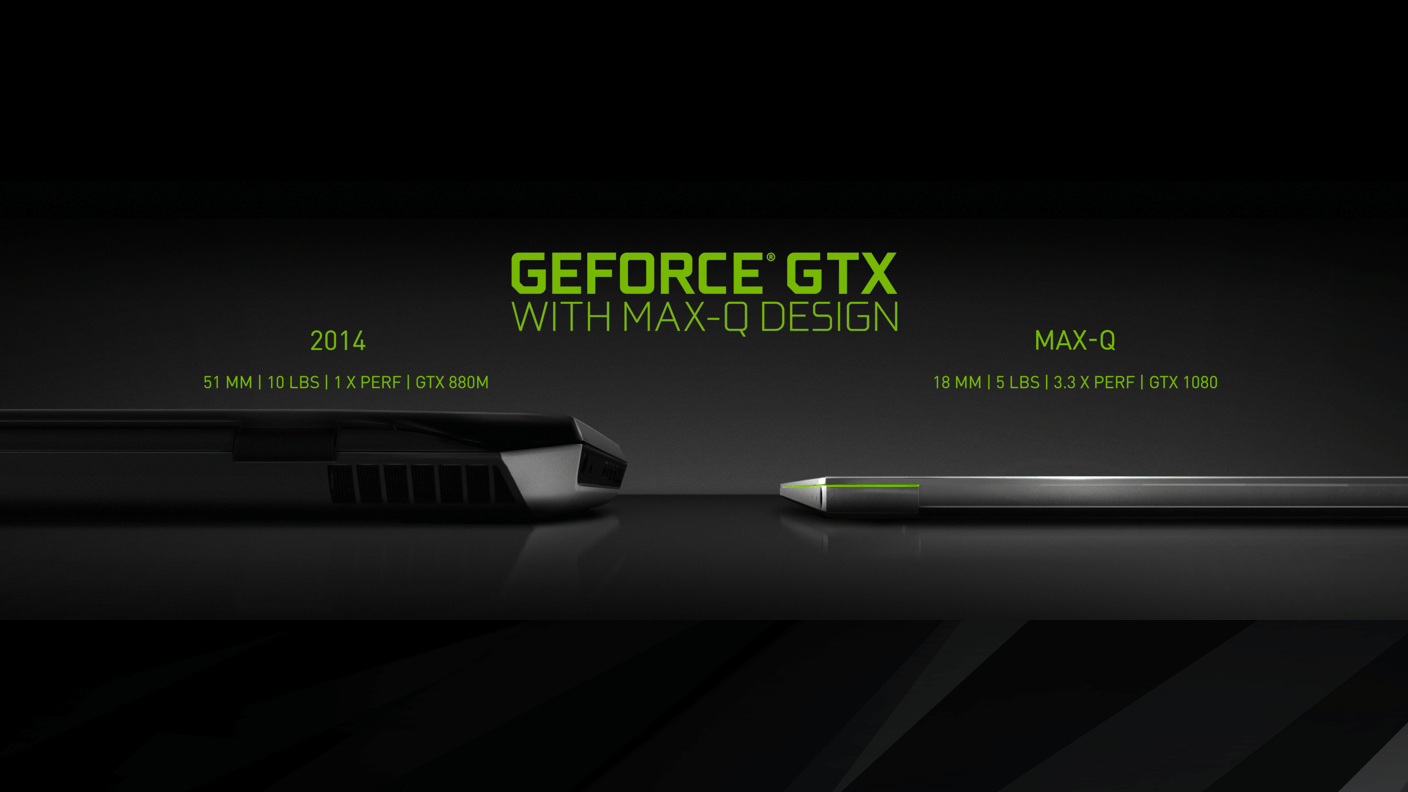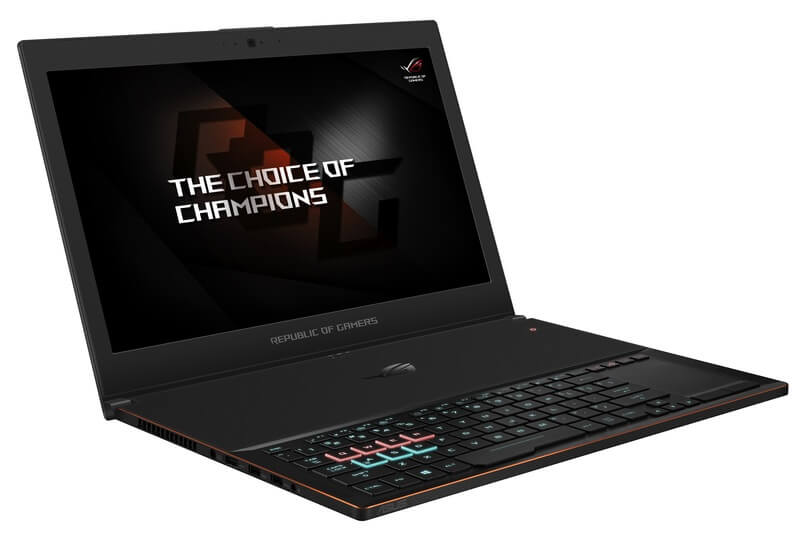
Usually when you think of high-end gaming laptops, the image of a huge, heavy, and not-very-mobile device comes to mind. But over at Computex, Nvidia has introduced a new type of design that it claims will make future machines three times thinner and three times faster than what we have today.
CEO Jen-Hsun Huang announced that OEMs would debut laptops featuring Nvidia’s Max-Q design starting at the end of next month. The term is taken from NASA’s mission to put a man into space, where it refers to “the point at which aerodynamic stress on a vehicle in atmospheric flight is maximized.” Nvidia has applied the same precision-engineered design philosophy used by the space agency to gaming laptops.
“The results: a high-performance gaming platform, that is as small as 18mm thick—as thin as a MacBook Air —with up to 70 percent more gaming performance than what is currently available,” the company said.

Various parts of the laptops are optimized and refined through Max-Q, such as its overall design, chips, game drivers, thermal and electrical components, and Pascal-based GPUs. So, expect super-slim, power-efficient laptops with GTX 1060, GTX 1070, and GTX 1080 cards that perform better without overheating.
“Max-Q combines a new way of operating the GPU for peak efficiency, with optimizations such as a low voltage optimized clock curve that wrings out gaming performance while reducing power,” Nvidia added.
Huang demonstrated a Max-Q laptop, the Rog Zephyrus, using a build of the upcoming Cars 2. Its incredibly slim, 5-pound body boasts a GTX 1080 and is apparently 60 percent faster than the PlayStation Pro 4.

Not only are these Max-Q laptops thinner and more powerful, thanks to the new WhisperMode, they’re also quieter. “WhisperMode intelligently paces the game’s frame rate while simultaneously configuring the graphics settings for optimal power efficiency,” the company said. The noise-reducing feature will be made available to any Pascal-based laptop, not just those with Max-Q, in an upcoming GeForce Experience update.

The Max-Q laptops will be available starting June 27 from vendors including Acer, Aftershock, Alienware, ASUS, Clevo, Dream Machine, ECT, Gigabyte, Hasee, HP, LDLC, Lenovo, Machenike, Maingear, Mechrevo, MSI, Multicom, Origin PC, PC Specialist, Sager, Scan, Terrans Force, Tronic’5 and XoticPC.
https://www.techspot.com/news/69502-nvidia-max-q-design-make-gaming-laptops-super.html